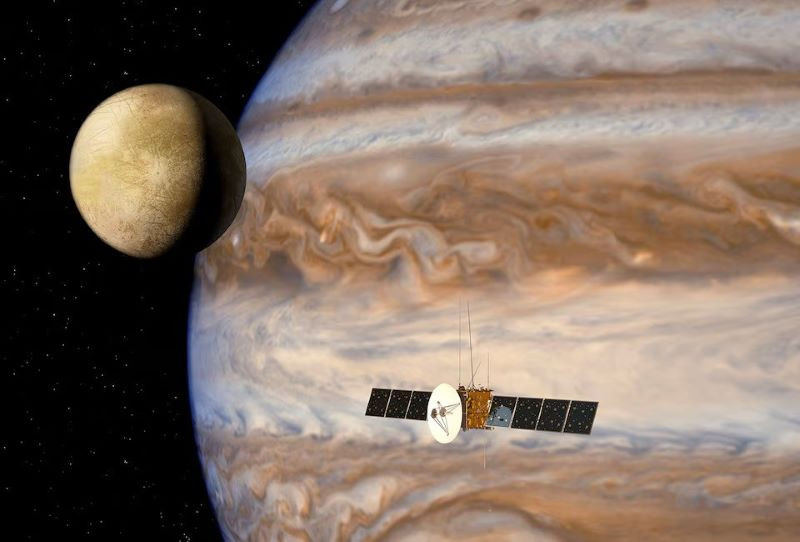
European scientists were due to attempt a first in orbital gymnastics late on Monday, tapping into the gravity of the Moon and then the Earth in quick succession to guide the JUICE probe towards Jupiter in the first-ever double slingshot manoeuvre.
Just over a year after it was launched, the European Space agency's Jupiter Icy Moons Explorer (JUICE) is returning towards Earth on Aug. 19-20 and will use the braking effect of its gravity to take a shortcut to Venus and onwards to Jupiter.
In a novel double manoeuvre, the Airbus-built (AIR.PA), opens new tab JUICE probe will first use the gravity of the Moon to swing towards Earth on exactly the right trajectory.
That's risky because the slightest error at that stage would be amplified by the second part of the routine which involves using Earth's gravity to slow down. Scientists warn that could derail the eight-year odyssey to reach Jupiter and its moons.
"Inherently this is a bit tricky, because you would need to correct any error, and you would need propellant for that," Nicolas Altobelli, JUICE Mission Manager, said in an interview.
Scientists have used the "gravity assist" method for decades to navigate the solar system while saving propellant.
It involves brushing past a planet or moon and using the power of its gravity to speed up, slow down or alter course.
But this week's lunar-Earth fly-by involves the first ever attempt to carry out two such manoeuvres back-to-back.
If successful, it will put JUICE on course to reach Jupiter and its three large ocean-bearing moons - Callisto, Europa and Ganymede - in 2031 with the help of three further single gravity assists: Venus in 2025, and then Earth again in 2026 and 2029.
ESA scientists had weighed several options for getting Juice to Jupiter without the unrealistically large rocket that would be needed to get it there without any gravity assists at all.
Using the Moon's gravity to change course allowed them to catch Earth in front of its orbit around the Sun, which has the effect of slowing down the probe, whereas passing behind the planet would speed it up, Altobelli said.
That in turn allowed ESA's planners to target Venus and take advantage of its exceptionally powerful slingshot effect.
"It's a very good configuration of the Moon's position around the Earth ... So we are being opportunistic," Altobelli told Reuters.
Following up on NASA's 1990s Galileo mission to Jupiter, the ESA-led JUICE mission will orbit the solar system's largest planet, perform fly-bys of its three large icy moons and finally orbit Ganymede to study the potential to support life.
"It means studying the conditions and understanding whether those moons could be a potential habitat, and could have conditions favourable for life as we know it," Altobelli said.























COMMENTS
Comments are moderated and generally will be posted if they are on-topic and not abusive.
For more information, please see our Comments FAQ